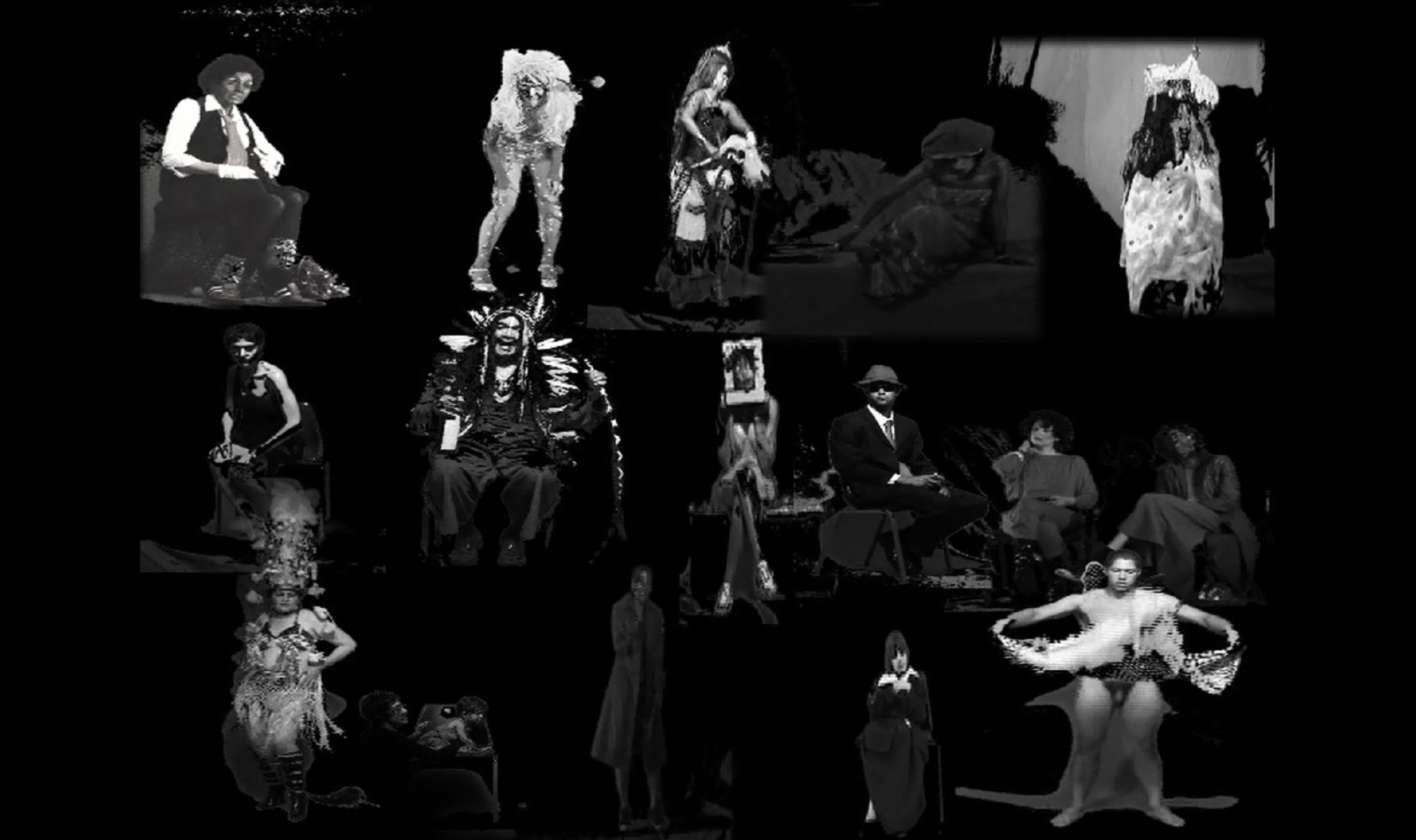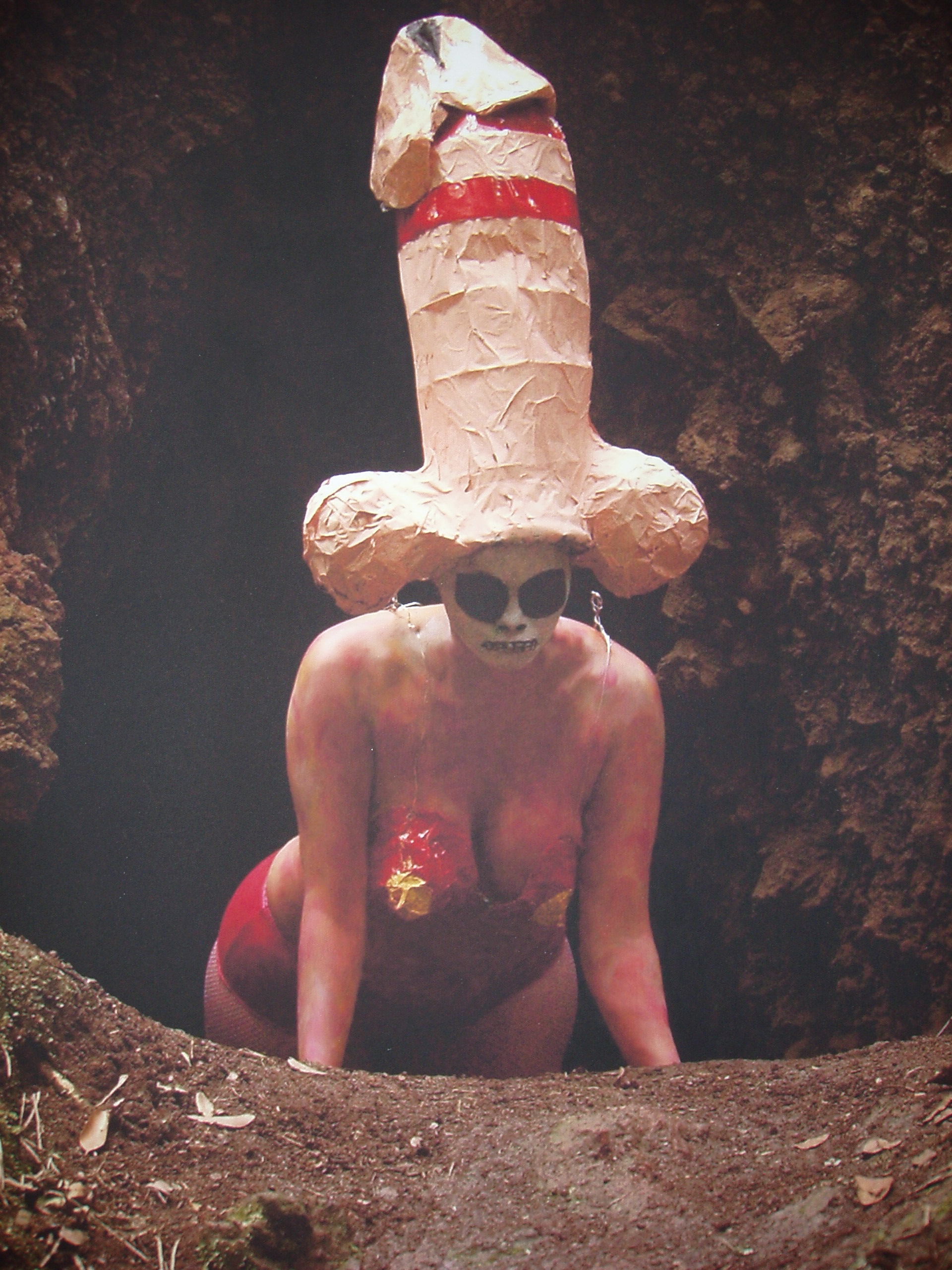Themes around identity and gender emerge in Tracey Rose’s work as she examines, probes and dismembers social history. Rose’s artistic practice includes video installations and photography, but she is mostly known for her performance art.
The term performance art gained momentum in the 1970s. It represented a departure from the “traditional materials of canvas, brush or chisel” and fundamentally rejected the art object while renouncing art’s patriarchal lineage with a radical turn towards the physical body (R Goldberg, Performance Art, 1988). The body is central to Rose’s work; an artistic tool offered as canvas to challenge, rebel against and deconstruct conventions governing women of colour.
Rose’s performance technique is often described as a form of “insertion”—a term explained by writer Salah Hassan as a complex manner in which an artist inserts her body into a work of art, embracing multiple layers of meaning inherent in the world. This is the same type of method attributed to the likes of American artist Cindy Sherman and Japanese artist Yasumasa Morimura.
In the Western imagination, non-Western bodies are often objectified, exoticized and viewed with a mixture of fear and desire. Hence, inserting one’s self or body into the work may also be an act of counter-penetration, an assertion of one’s own subjectivity in response to objectification. Insertion can also be used to assert one’s presence in the face of presumed absence. In some cases, insertion is also a strategy to signify that racial and cultural differences in Western society-or “otherness- are inscribed on the non-white body. – Hassan
Aspects of performativity are central and essential to Rose’s practice. Performativity functions as a complex and transgressive language where Roses’ body is a powerful tool—the body is knowledge, the body as medium, the body as archive.
The second source [of an archive] is the body, occurring through our memories and complex genealogies, by which traces of the dead are passed down from generation to generation through the gestures, stories and practices of our cultures and the cultures of our ancestors. – Allan Parker, Acts of Transgression
Rose’s work is often sharp edged, anarchic in form and profoundly political. In 2001 at the 49th Venice Biennale she presented Ciao Bella, a 13 minute feminist parody of Leonardo Da Vinci’s Last Supper (1495–8) in which she played 12 female “apostles”. This was a crucial body of work that was considered subversive and necessary. Rose does not shy away from provoking and disrupting. Earlier this year Rose’s work was included in the pivotal exhibition “Mating Birds Vol.2” —the curatorial essay visualising the histories associated with the Immorality Act during apartheid South Africa.
If we are to look at Rose’s career in the form of a linear timeline exhibiting important moments in the artist’ career, we see that her work is a threaded by essential fractiles through a landscape of powerful ideas —she is listening and responding to conditions.
In 2011, she presented a show with New-York based performance and conceptual artist Lorraine O’Grady—ROSE O’GRADY. This intergeneration and international dialogue (through video, photography, text, and installation, with performance at the core) took place at the Goodman Gallery in Johannesburg.
Rose was born in Durban in 1974, she holds a Master of Fine Art from Goldsmiths College, University of London and a B.A. in Fine Arts from the University of the Witwatersrand. Her career spans over two decades with her works featured across the world including; Sharjah Biennial 14 in the UAE, Art Basel in Switzerland, Lubumbashi Biennial in the DRC, Documenta 14 in Germany and Greece, Performa 17 in North America, Dakar Biennale in Senegal and many more.
Rose has been selected by the South African Department of Arts and Culture (DAT), together with artists Dineo Seshee Bopape and Mawande Ka Zenzile to represent the South African Pavilion at the 58th Venice Biennale (curated by Nkule Mabaso and Nomusa Makhubu) where the artists will respond to the theme; “The Stronger We Become” under the broader theme of the Biennale “May You Live In Interesting Times” set by curator of the Biennale Ralph Rugoff. Both themes are set to capture the state of uncertainty, crisis and turmoil in multiple facets of society.
The exhibition will take place between 11th May – 24th November 2019. It marks an important moment in the history of exhibitions as it will be the first time ever where 50% of the exhibiting artists are female.




















































